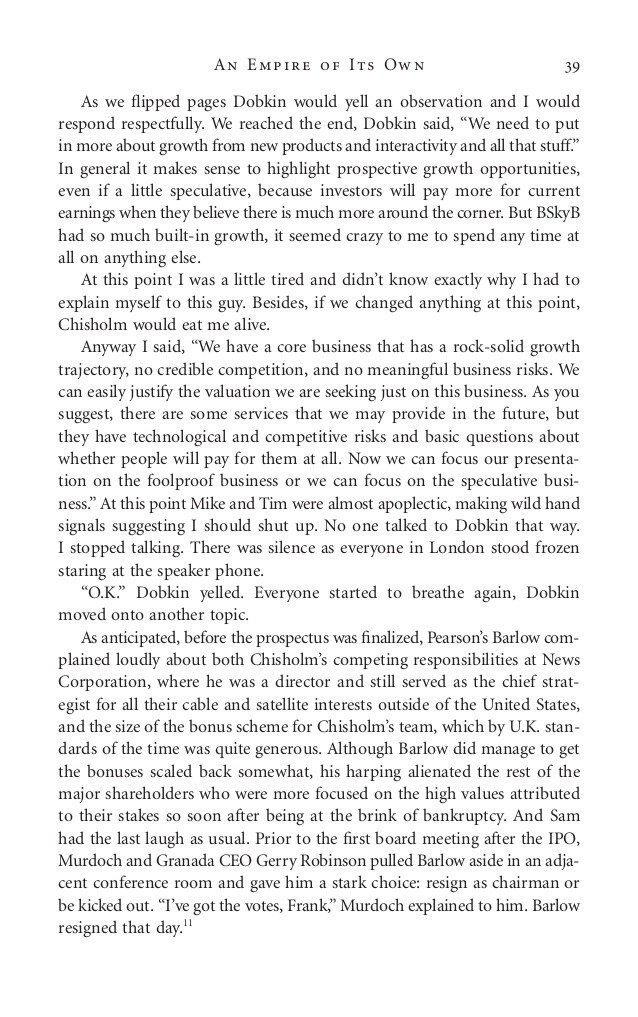Conference calls Press #1 for investment insight The Globe and Mail
Post on: 26 Апрель, 2015 No Comment

Quarterly Earnings Release The quarterly earnings release provides information related to the business environment, operations and financial results from the previous quarter — all important information necessary to evaluate and confirm an investment thesis. The release may provide forward guidance as to what the company expects financial results to be in the coming quarter. However, the release focuses primarily on past results. The earnings conference call reiterates the information in the quarterly press release, but by contrast, it usually has more detailed discussion on future prospects for the company, providing an opportunity to confirm or amend an investment thesis.
More from Investopedia.com
Investors’ Responsibilities Prior to the Conference Call Prior to any conference call, the earnings release is posted in a public forum, typically on a company’s website, as well as to the news media. The release is scheduled to be posted with adequate time prior to a conference call to allow investors to read and analyze the information. Investors should always read the earnings release and highlight important statements and financial results. Investors should compare the release to the prior quarter’s release and the prior year for the same quarter’s release.
It is important to compare the current release’s outcome to the prior year’s release to gain an understanding of seasonal or cyclical patterns and improvement over prior quarters to access the success or failure of the results. Without assessing in this context, the results are less meaningful. Similarly, the results need to be in the context of the current operating environment. When reviewing in these contexts, investors are able to formulate questions that should be addressed during the call. (Learn about some of the tricks companies employ in earnings releases in Five Tricks Companies Use During Earnings Season .)
Conference Call Format The conference call has many participants. The CEO, CFO and investor relations are typical participants, but often some senior operations employees participate as well. Although varying from company to company, calls follow a similar format. The CEO usually begins with a discussion on high level operating results and provides some commentary on the industry and operating environment. The CFO provides more detail and insight into the results, clarifying and providing specifics on line items in the financial statements. Then additional comments, including guidance for the upcoming quarter, are divulged.
Investor relations, a function at most large public companies, usually introduces the executive team members participating on the call, but more importantly is available after the call or at other times to answer questions investors may have about the earnings release or any other company related inquiries.

Q&A Period The Q&A period is the part of the call where information related to strategy and vision, forward or upcoming industry and operating environment, as well as company prospects, such as new products, are revealed. Investors have a chance to ask all the questions they did not feel were adequately discussed during the prepared remarks from the company.
What to Look for The call is one of very few touch-points that investors have with a company’s management team, and it allows investors to assess the quality of the management team and determine if the company is following its plan and meeting its strategic goals at regular time intervals. Often it is not only what the management says but what it omits or declines to discuss that provide a basis for investing. Investors need to pay special attention to how the management team explains the reasoning for meeting, exceeding or missing targets as well as check for discrepancies from previous discussions.
Additionally, Wall Street analysts that follow the company tend to have specific predictions or expectations that they require a company to meet. These expectations are generally set based on previous guidance and conversations with the management. Results that vary from these expectations and the management team’s commentary on the sources of variance often move the stock up or down and thus need to be fully understood. (For more on analyst expectations, be sure to read Analyst Forecasts Spell Disaster For Some Stocks .)
Conclusion Earnings conference calls provide a detailed understanding of a company’s operations for a given period of time. Although the information is backward-looking, it is part of an investment mosaic that investors should create and update to ensure investments are sound. Reviewing the earnings release, setting expectations based on forward looking guidance and other prospective commentary, and assessing the quality of the management team are outcomes investors gain from this quarterly event. Together with other investment tools, the earnings conference call aids in the creation of an investment thesis.














